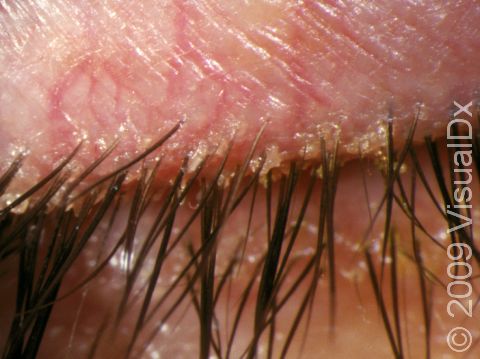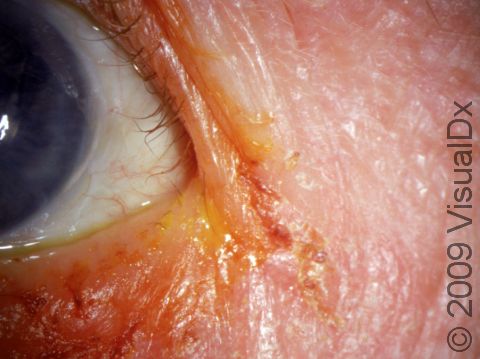Blepharitis
Blepharitis is inflammation of the eyelids. When it involves the outside front of the eyelid, where the eyelashes are attached, it is called anterior blepharitis. Anterior blepharitis may be caused by:
- Bacteria
- Scalp dandruff (seborrheic dermatitis)
- Allergy
- Psoriasis
If blepharitis involves the inner eyelid, it is called posterior blepharitis. Posterior blepharitis may be caused by:
- Dysfunction of the oil (meibomian) glands in the eyelid
- Acne rosacea
- Scalp dandruff (seborrheic dermatitis)
- Allergy
Who's At Risk?
Although blepharitis is very common, people who have scalp dandruff (seborrheic dermatitis), dry skin, acne rosacea, contact allergies, diabetes, poor hygiene, or those sensitive to chemical irritants or cosmetic makeup are much more likely to suffer from blepharitis. Blepharitis is not contagious.
Signs & Symptoms
Typically, the eyelids are reddened (“red rims” as it is often called), swollen, and slightly warm, often with crusty debris (in the lashes, in the corner of the eyes, or on the lid edges). Burning, tearing, sensitivity to light, the feeling of a foreign body in the eye(s), sticking together of the lids, watery or mucous discharge, pain, blurry vision, and eye redness may all occur with blepharitis. Eye lashes may fall out or become twisted and possibly irritate the eye. Blepharitis may affect only one eye, but, usually, both eyes are involved.
Self-Care Guidelines
- Apply frequent warm, moist compresses.
- Clean the eyelids with baby shampoo and a wet cotton ball.
- Practice good hygiene of the face and scalp, including use of antidandruff shampoo, if needed.
- Make sure all makeup is removed daily.
- Avoid any irritants that might cause blepharitis.
- Keep underlying conditions controlled (eg, diabetes and acne rosacea).
Treatments
Typically, blepharitis is a chronic condition, but careful attention to daily hygiene and other preventative measures will reduce the recurrence rate.
Visit Urgency
- Pain is increasing.
- Vision is worsening.
- Swelling is increasing.
- The eyelids become hot to the touch.
- The condition is not getting better within a week despite self-care.
- There is blistering and/or rash on the eyelids.
- There is development of a lesion (bump or growth) on the eyelid that does not respond to the warm compresses.
Trusted Links
References
Kanski JJ, Nischal KK, eds. Ophthalmology: Clinical Signs and Differential Diagnosis. pp. 14-15. Philadelphia: Mosby, 1999.
Wolff, Klaus, ed. Fitzpatrick’s Dermatology in General Medicine. 7th ed, p. 224. New York: McGraw-Hill, 2008.
Last modified on October 10th, 2022 at 3:36 pm

Not sure what to look for?
Try our new Rash and Skin Condition Finder


